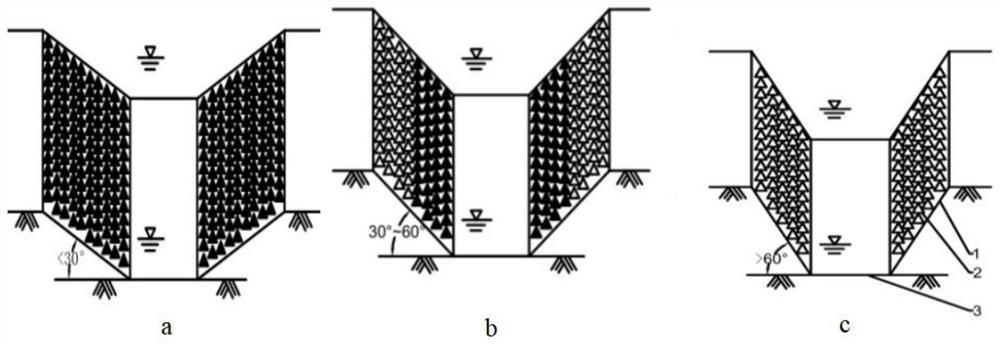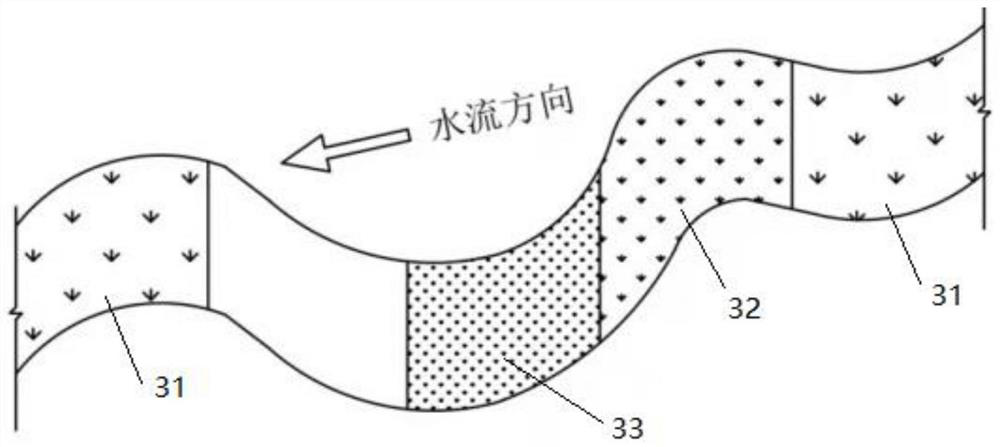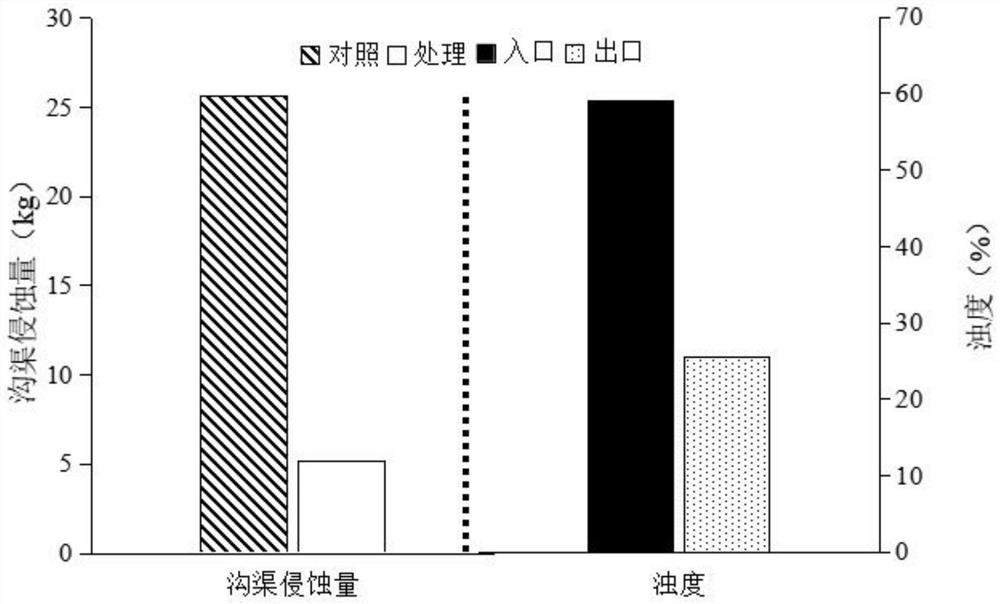Ecological pollution reduction type drainage ditch construction method for preventing ditch wall soil loss
A soil loss and construction method technology, which is applied in the field of agricultural non-point source pollution, can solve problems such as high cost, damage to ditches and ditch walls, and large engineering volume, and achieve the effects of low operation and maintenance costs, prolonged residence time, and prevention of soil erosion
- Summary
- Abstract
- Description
- Claims
- Application Information
AI Technical Summary
Problems solved by technology
Method used
Image
Examples
Embodiment 1
[0026] Such as figure 1 A method for constructing an ecological pollution-reducing drainage ditch to prevent soil loss on the ditch wall includes the following steps:
[0027] (1) Construct drainage ditch: described drainage ditch comprises ditch main body, ditch wall and ditch bottom on both sides of ditch main body, and the cross section of described ditch main body is trapezoidal;
[0028] (2) Plant different plants according to the slope of the ditch wall: when the slope of the ditch wall is less than 30°, plant vetiver all over the ditch wall; when 30°≤slope of the ditch wall≤60°, plant the lower half of the ditch wall Vetiver, elephant grass planted on the upper half of the ditch wall; when the slope of the ditch wall is >60°, elephant grass is planted on the entire ditch wall.
[0029] In this embodiment, five planting areas are set along the water flow direction at the bottom of the ditch, and plants with different levels of vegetation coverage are planted in the plan...
Embodiment 2
[0031] In order to verify the technical effect of Example 1, the experiment was carried out in the subtropical red soil farming area with thin soil layer, large soil porosity, and poor water retention. The experiment was set up in the early stage, grass plants were planted, and the entire ditch was 280m long. Water samples were collected at the entrance and exit of the ditch during the rainstorm period, and the turbidity, total nitrogen (TN) and total phosphorus (TP) concentrations were measured, and the ditch was measured after the rain to calculate the amount of ditch erosion.
[0032] Measurement results such as image 3 and Figure 4 shown. Taking the average value of three rainfalls as an example, the results show that the erosion amount of the gully wall planted with grass plants is 3.2kg, and the ditch wall of the control section is completely exposed, and the erosion amount caused by the collapse of the ditch reaches 25.6kg, indicating that the ditch wall is planted w...
PUM
 Login to View More
Login to View More Abstract
Description
Claims
Application Information
 Login to View More
Login to View More - Generate Ideas
- Intellectual Property
- Life Sciences
- Materials
- Tech Scout
- Unparalleled Data Quality
- Higher Quality Content
- 60% Fewer Hallucinations
Browse by: Latest US Patents, China's latest patents, Technical Efficacy Thesaurus, Application Domain, Technology Topic, Popular Technical Reports.
© 2025 PatSnap. All rights reserved.Legal|Privacy policy|Modern Slavery Act Transparency Statement|Sitemap|About US| Contact US: help@patsnap.com



